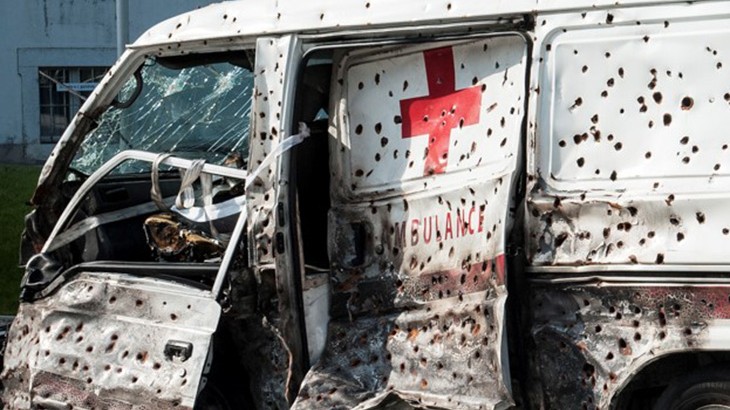Attacks on Aid: Quantifying Risk of Violence Toward Aid Workers in Global Humanitarian Settings

Ambulance destroyed by gunfire. (via ICRC)
Motivation
In recent decades, attacks on aid workers in complex crises have been steadily increasing, with a recorded 483 workers killed, kidnapped, or wounded in 2019 alone. We are interested in understanding changes in the risk associated with humanitarian action in different geographic contexts and over time using several key comprehensive databases.
Our analysis focuses on the Aid Worker Security Database (AWSD, via Humanitarian Outcomes organization), which has collected data on attacks against humanitarian aid workers globally since 1997. Additional information related to country violence comes from the Uppsala Conflict Data Program (UCDP). These data are used in conjunction to assess the relationship between aid worker attacks and conflict intensity, conflict actors (state vs. non-state actors), and aid worker characteristics (national vs. international, type of organization).
A focus on Afghanistan allows for a closer look at one of the most consistently violent settings identified in the various databases used for global-level analysis.
We want to acknowledge that some of the content in this website including images and descriptions of graphic violence and military occupation will likely be difficult to read or triggering.
What You’ll Find In This Website
- Stratified analyses of global trends in violence against aid workers
- A closer look at Afghanistan, in which multiple environmental factors are examined in conjunction with violence against aid workers
- A full report detailing our process (see Project Report tab)
- A screencast walking you through this website (see play button icon)
- The github repository containing our raw code and analyses (see Github icon)
- A World Health Organization 2020 tribute to aid workers (see ambulance icon)
Visualizations and analyses performed using R (v4.0.3) and RStudio (v1.3.1073).
Additional interactivity added using plotly (v4.13.0) and Shiny (v1.5.0).
Click here to see publicly available Aid Worker Security dataset, a project of Humanitarian Outcomes.
Click here to see publicly available Uppsala Conflict Data Program, a project of Uppsala University Department of Peace and Conflict Research.
2020